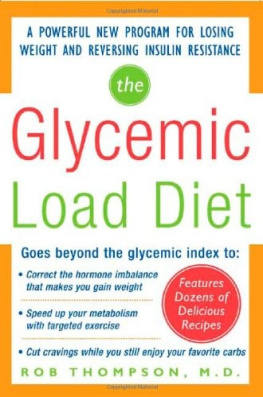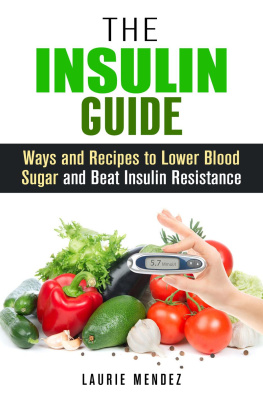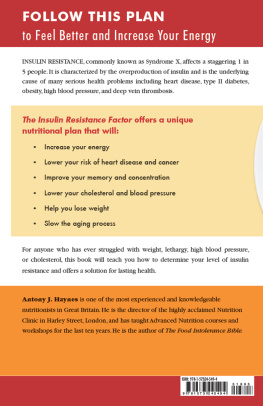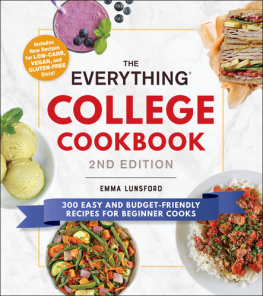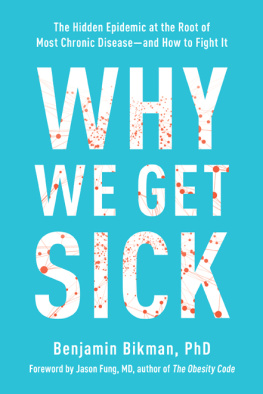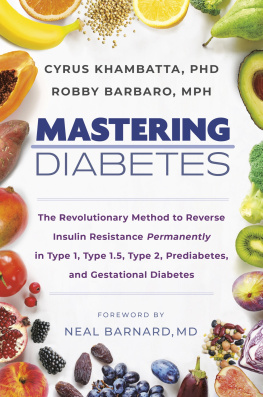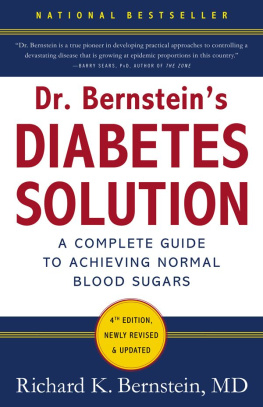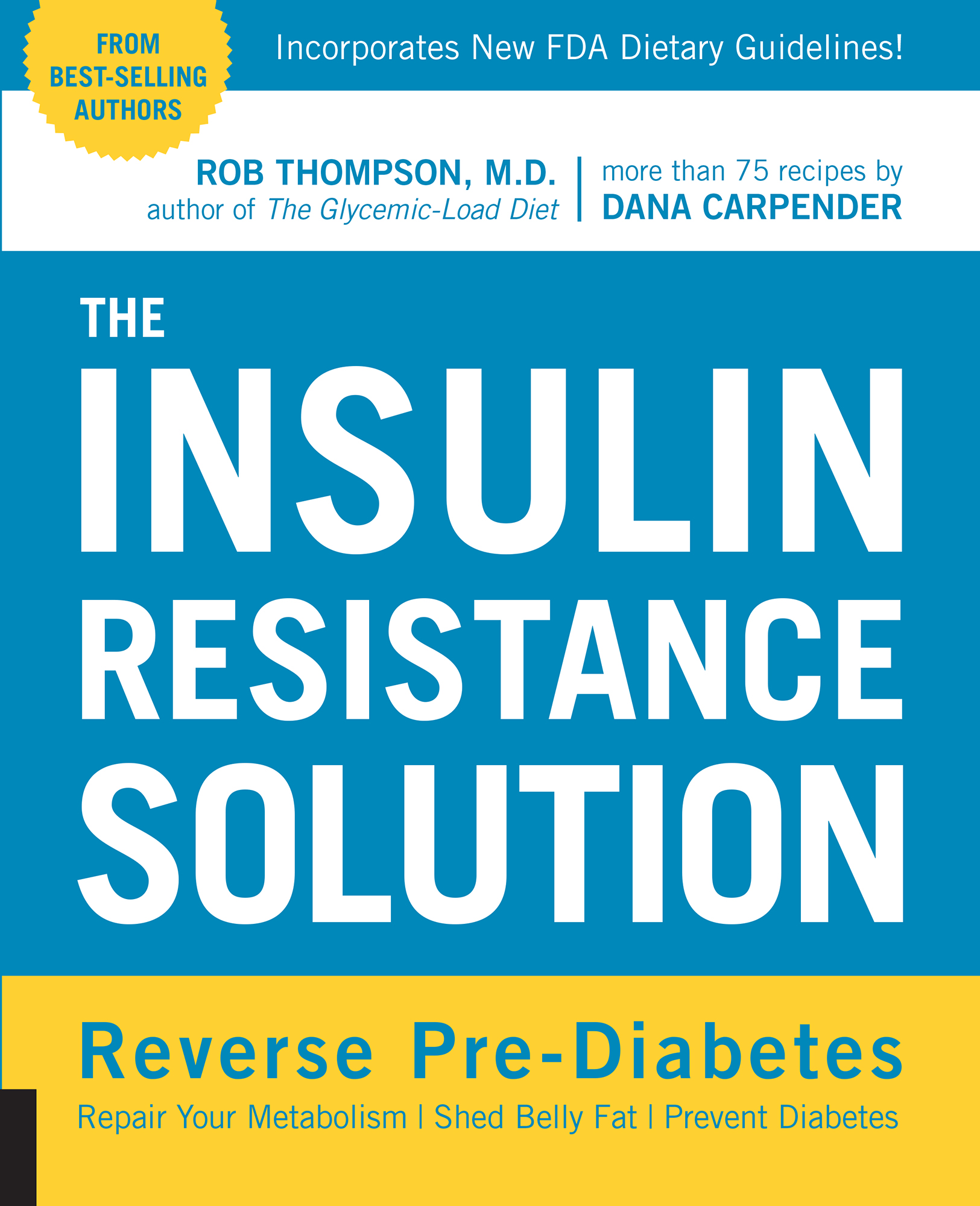THE
INSULIN RESISTANCE SOLUTION
Reverse Pre-Diabetes
Repair Your Metabolism | Shed Belly Fat | Prevent Diabetes
ROB THOMPSON, M.D.
author of The Glycemic-Load Diet
with more than 75 recipes by
DANA CARPENDER


2015 Quarto Publishing Group USA Inc.
Text 2015 Rob Thompson, M.D., and Dana Carpender
First published in the United States of America in 2016 by
Fair Winds Press, an imprint of
Quarto Publishing Group USA Inc.
100 Cummings Center
Suite 406-L
Beverly, Massachusetts 01915-6101
Telephone: (978) 282-9590
Fax: (978) 283-2742
QuartoKnows.com
Visit our blogs at QuartoKnows.com
All rights reserved. No part of this book may be reproduced or utilized, in any form or by any means, electronic or mechanical, without prior permission in writing from the publisher.
Digital edition published in 2015
Digital edition: 978-1-62788-190-6
Softcover edition: 978-1-59233-646-3
Library of Congress Cataloging-in-Publication Data available.
Interior page design: tabula rasa graphic design
The information in this book is for educational purposes only. It is not intended to replace the advice of a physician or medical practitioner. Please see your health care provider before beginning any new health program.
To my patients, who have always placed their trust in me.
Rob Thompson, M.D.
This one I dedicate to you, readers. You have been given bad advice, and it has led you to a dangerous place. That changes today. Welcome to the rest of your lifeyou are going to be amazed.
Dana Carpender
CONTENTS
Guide
INTRODUCTION
BELLY FAT
THE CANARY IN THE COAL MINE
You dont like the way you look. Your clothes dont fit, you cant move around as easily as you used to. Maybe your doctor said youre at risk for diabetes. But what can you do? Youve tried diets. They work for a while, and then the weight comes creeping back. You blame it on a lack of self-discipline, but consider this: twice as many Americans are overweight now than forty years ago. Did all these people suddenly just lose their willpower? It doesnt make sense. Why should you deprive yourself, when people forty years ago seemed to be able to eat what they wanted without getting fat?
Back then, Americans figured they were on track to be healthier than ever, but then something happened that ended up making us less healthy. Scientists thought they had discovered what caused heart attacks: the cholesterol in food. They also thought they knew what caused obesity: eating too much fat. They spread the word that if you wanted to stay slim and prevent heart disease, you needed to avoid foods containing fat and cholesterol, including eggs, dairy products, red meat, and fatty vegetables such as nuts, olives, and avocados. Grocery stores responded by selling low-fat, low-cholesterol foods; vegetarianism became popular; and for the first time in history, the U.S. Food and Drug Administration (FDA) got involved in trying to get people to eat righti.e., consume less fat and cholesterol. Americans did what they were told: from 1970 to 1997, they reduced their consumption of eggs by 23 percent; milk fat by 52 percent; and red meat by 16 percent.
Well, we are living longer, but its not because we changed our diet. Fewer of us are smoking, and we have better treatments for heart disease, cancer, and stroke. But the fact is, were still an unhealthy lot. Two-thirds of us are overweight, a third are obese, and, since 1970, the diabetes rate has tripled. More of us than ever suffer from arthritis and gout. More men complain of reduced vitality and sex drive, and more women are battling infertility. Despite all the advances in medicine that have been made in the last fifty years, we dont look as good as we should, we dont feel as good as we should, and were suffering from serious medical problems at higher rates than ever.
Were also shaped differently than we were before; our bellies are bigger. Obviously, if you gain weight your belly will get bigger, but studies show that the sizes of our abdomens relative to the rest of our bodies are increasing. Even skinny folks these days have potbellies. Since 2002, our average weight has stayed the same, but our bellies have gotten even bigger.
Whats causing these problems? The tip-off is the potbelly. Belly fat is the proverbial canary in the coal mine, a sign that something is making us sick. Only its not coal mine gas causing the trouble. Its one of our own hormonesinsulin. Were producing too much of it, and its bringing on a host of problems that were much less common forty years ago, including abdominal obesity, adult-onset diabetes, female infertility, and low testosterone in men.
The problem is what doctors call insulin resistance. It sounds technical, but its pretty simple. Your body needs insulin to transport the glucose out of your bloodstream into your muscles. If you have insulin resistance, your muscles lose their responsiveness to insulinthey become resistant to insulin. As a result, your insulin-making cellsthe beta cells of your pancreashave to produce larger than normal amounts of insulin to control your blood glucose levels.
If you havent heard of insulin resistance, thats understandable. It has only been in the past decade or so that doctors have learned how to diagnosis it and discovered how common it is. America is experiencing an epidemic of insulin resistance. Approximately a third of the American population develops it by the time they turn forty. This epidemic has turned previous thinking about diet on its head. No longer does the FDA recommend reducing dietary fat and cholesterol. The emphasis of the latest Dietary Guidelines for Americans is on reversing insulin resistance.
The good news is that insulin resistance is actually easy to prevent, treat, and reverse. In fact, in the past people avoided it without even trying. You dont need to go on a diet. You dont need to sweat and strain at a gym. You dont need to take medication. You just need to reduce the amount of insulin your body produces, and if you understand whats going on, this is remarkably easy to do.
Part I of this book will help you determine whether you have insulin resistance and explain how a few seemingly minor lifestyle changes can have major effects on how much insulin your body produces. Part II will show you how easy it is to regain your sensitivity to insulin and restore a normal hormone balance without dieting, in the usual sense of the word, or engaging in grueling exercise. Part III will deliver delicious recipes to put you on the path toward a healthier and tastier way of eating.
PART I
UNDERSTANDING INSULIN RESISTANCE
| INSULIN: TOO MUCH OF A GOOD THING |
Y our body gets its fuel from three kinds of food: carbohydrates, protein, and fat. Carbohydrates are plant products such as fruits, vegetables, grains, and sugar. Fat and protein come from animal products, including eggs, meat, and dairy, and from fatty vegetables such as nuts, olives, and avocados. Each kind of food has its own building block. For carbohydrates, its a type of sugar called


